You might be wondering why luxury is in the title of our blog post, but first I want to share my two favorite questions from clients. How much? How long? In product development, these questions almost always come up. Prepare to find the secret answer to these questions! To start, let’s talk about what you invest into a project besides just money.
It’s a short list of one. Your time. That’s about it. You don’t need to put anything else into developing a product when you hire the right team. Hire the wrong team, and of course the cost goes up in time and money. The point of paying someone else is to minimize your time to the least required amount for the most effective results. What does this mean exactly? It means answering questions directly and quickly, providing feedback when needed, and making the decision at each check-point to make sure you are still happy with the investment and you want to proceed. As long as it’s green lights from you through the entire process, then you will get a fully developed product if it’s humanly (or robotically) possible for production.
Now, wait for it. A little more. One. Second. More. Alright, here’s the answer I give everyone, and this is a ballpark. If you have a low to mid complexity consumer product, with no electronics, you are probably looking at between $10,000 and $50,000 to get your product from an idea to production ready, not including any prototype costs. Now, did you notice how many conditions I had to put on that range? Three, and it’s a ball park guesstimate. Let that sink in.
Here’s a second range: $25,000 to $150,000 for low to mid complexity electronic product development. What if you want an app for your product? Add at least another $20,000 in app design/development costs. And what are these numbers? These are just averages based on my experience of working in the industry for over 15 years. I’ve seen projects with a budget of $3,000 and ones with multi-million-dollar development cycles.
Now, does that mean your product idea will always sit nicely these ranges? No. It’s impossible to know what your product will take to develop until it’s fully understood. That’s why the Peterman Design Firm sends out a Scope of Work to every person wanting an estimate. And we ask what the budget is. The other part of budgeting is that two people with the same idea could be wanting or able to invest different amounts of money into the development process. Nike is going to spend way more developing a new shoe than a start-up brand who doesn’t have the capitol. Apple is going to spend more developing a new device because it’s a luxury product compared to other brands. So, this makes us ask a question, does a higher budget mean you’ll get a better product?
Well, the answer is maybe. Does it get you more concepts, clearer market research, more manufacturing options, and the ability to make more changes along the way? Yes. A $1,000,000 project will get more time put into developing the product than a $20,000 project will. As a general rule, you can achieve 80% completion with the first 20% of investment. The Peterman Design Firm usually tries to follow this 80/20 rule when creating proposals for those who don’t have big budgets, or are tight on time, typically the startups.
This means instead of spending 100 hours getting something 100% perfect, the Peterman Design Firm spends 20 hours and get the product to 80% perfect. This of course is a general “rule” that applies to everything in the world, working smarter, not more expensive. What does that mean for you? You pay 20% of what high end companies would spend developing the product you want to go to market with. What products get 100% perfect? The ones that have companies willing to pay 5 times more to get the same product designed.
Think Apple or Samsung, today the proof is between many other smartphones that work great, do everything needed, but miss the finer details on some points compared to Apple or Samsung. These are 80% products. Often the products that most people buy and can afford, and therefore have the greatest market interest, are 50% to 80% products. They work, but aren’t perfect, they are not luxury.
So, the question is: are you a luxury brand or not? If you are and want to be so, then be ready to invest like one, and spend the money to get to 100% perfection. That’s something the Peterman Design Firm can do for you. I’ve worked on luxury/high end products, and general consumer ones, and I love working on both types. If you aren’t a luxury brand, then let’s be smart about your investment, maximize it, and get your product developed in the most effective way possible.


